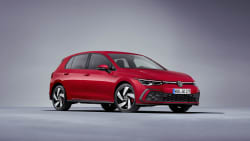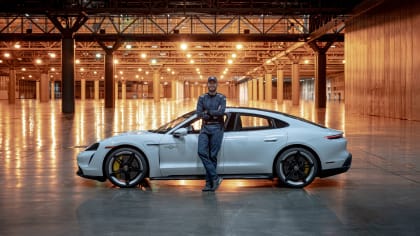#TBT: The W8 Passat

VW really put a W8 engine in a Passat? Yes.
The W-style engine is one of many Volkswagen’s innovative powertrain examples – and the W8 powerplant was once in the Passat line.
By The Editors
Thu, Mar 18, 2021 01:14 PM PST
Editor’s Note: #TBT is a weekly release by Volkswagen, which covers historic and intriguing aspects of VW over the years. All content and photos are courtesy of Volkswagen. -CM
Volkswagen has a long and storied history of developing powertrains unique for their performance, technology, efficiency, and design. Such was the case in the late 1990s when VW offered its “W” engine in a series of concept supercars before it came to prominence in a multitude of Bugatti and Bentley production models.
W engines were later optional in a handful of Volkswagen and Audi models at the time as well. The most unique of these may be the W8-equipped Passat, available from 2001-2004.
The initial W engine, conceived in 1997 by then-Volkswagen AG CEO Ferdinand Piëch, was a giant 18-cylinder unit, comprised of three VR6 six-cylinder banks configured in a tilted “W” shape. The W18 would debut in a concept from the recently-acquired Bugatti in 1998, but the practical intent of the engine’s architecture was to offer compact, powerful alternatives to larger V6 and V8 engines.

With the W16 that would arrive with the Bugatti Veyron and the W12 that would revive Bentley, W engines proved viable in the market, and Volkswagen looked to bring smaller versions to its own lineup. (Read more about the history of the W engine here.)
The design of the W8 engine saw two narrow-angle 15-degree VR4 cylinder blocks arranged on a common crankshaft at an angle of 72 degrees—imagine two Vs joined at their apexes. The resulting 4.0-liter W8 produced 275 horsepower and 273 lb-ft of torque at 2,750 rpm.
More importantly, thanks to its small package, the W8 could be mounted transversely under the hoods of predominantly front-wheel drive cars. The Passat might at first seem an unlikely choice for the unusual W8 engine. But, at just 16.5 x 28 x 26.9 inches, the W8 fit neatly into the car’s engine bay, which until then could only accommodate up to a V6 engine.

The late 90s was a time of growth for Volkswagen, and Piëch sought to ride the wave into higher-end market segments. While this push obviously included the acquisition of Bugatti and the revival of Bentley, it also meant making an effort at taking Volkswagen itself upscale.
An eight-cylinder Passat gave the company a play to compete with higher-end, higher-horsepower luxury sedans while still being able to present itself as a value buy. Volkswagen announced the W8 Passat as exactly what it was: “a bridge into the luxury sector … likely to appeal to buyers looking for high performance and quality in a subtle and affordable package.”
Starting around $40,000, W8 Passat models came standard with the company’s 4Motion® all-wheel drive and were offered with either a six-speed manual or five-speed Tiptronic® automatic transmission. Though at the time it was the most expensive Volkswagen model ever produced, it was competitive with offerings from luxury carmakers costing many thousands more.

At the same time, it stood far apart from other Passat variants, with standard features like tinted and heat-insulated glass, bi-xenon headlights, and park distance control. Inside, supple leather met with wood accents and a powerful audio system.
An additional enthusiast treat, the Passat W8 was also available as a wagon. Reviews were complimentary, but the idea of a higher-end Passat with this strange new engine never quite landed with the buying public.
In 2004, with only about 11,000 examples built, the W8 Passat was discontinued—and with it, the W8 engine itself. The Passat would be the only vehicle to have ever utilized the brand’s eight-cylinder W engine.
The short life of the W8 Passat helped establish its value against more expensive luxury sedans of its day, while its price paved the way for the high-end, W12 engine-equipped Phaeton that debuted just after its run started.
Over the years an appreciation grew for the W8 Passat—the small number produced made it rare; being the only production application ever of the W8 engine made it unique; and the ability to configure a six-speed manual wagon version gave it an audience such that the W8 Passat remains a sought-after enthusiast vehicle to this day.






